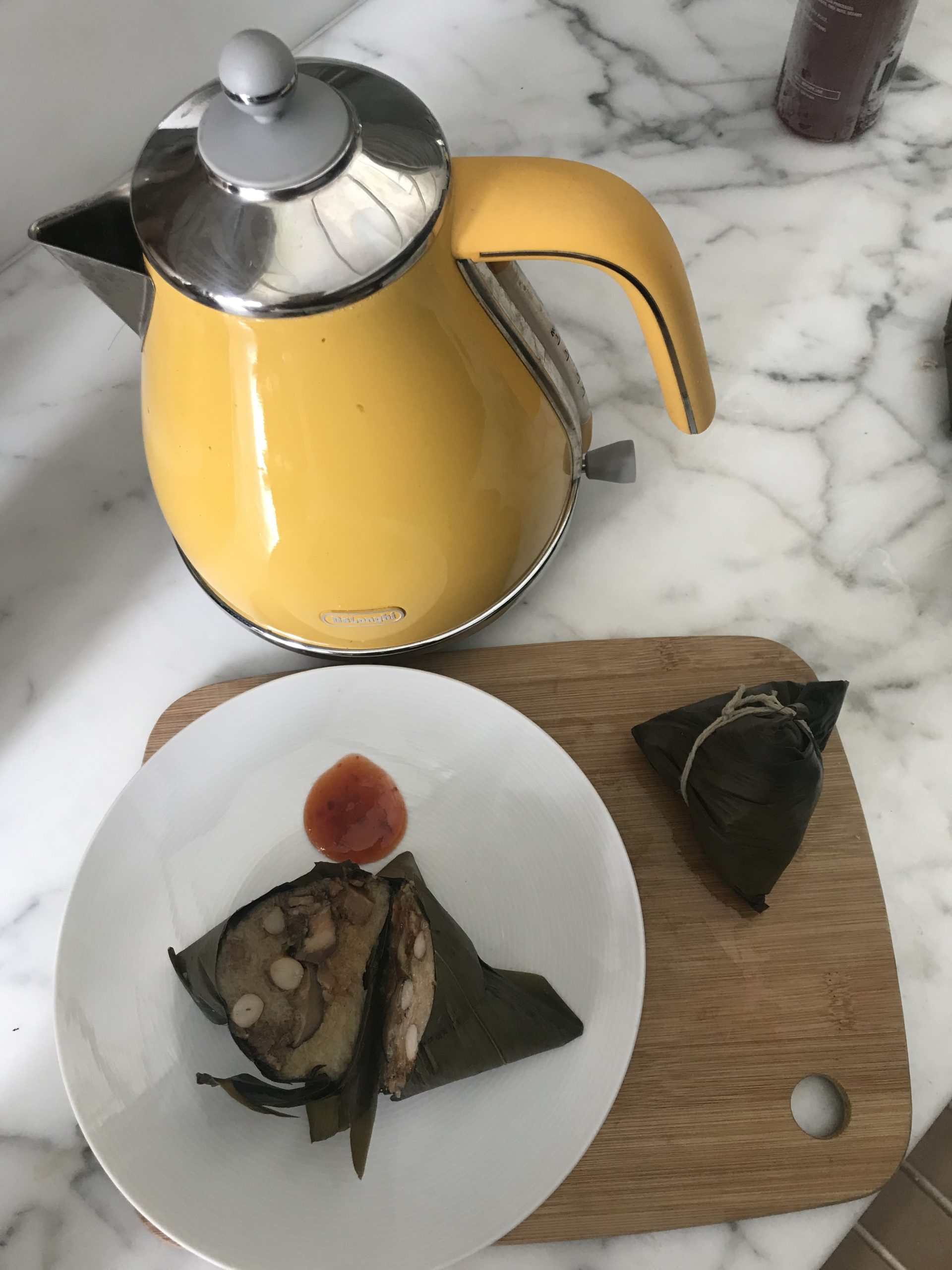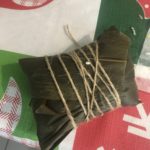Most of us associate the word “dumplings” with Chinese wontons or Japanese gyoza. But the Chinese dumpling festival celebrated on the 5th day of the 5th lunar month does not refer to either of those. Festival dumplings (zongzhi in Mandarin, choong in Cantonese) are glutinous rice with a savoury pork filling, wrapped in bamboo leaves. Although eaten all year round, the zong festival commemorates the life and death of a heroic figure around 300 B.C.
I grew up with this story – Qu Yuan, a poet and administrator, protested to the king against what he saw was an unwise alliance with a warring kingdom, the Qin. He was exiled for his efforts. Eventually Qin forces won and in despair Qu drowns himself. The local people rush to try and rescue him (thus sparking the tradition of dragon boat races) and also drop dumplings in the river so that fish would eat these and not Qu’s body. Not exactly a bedtime story you’d want to tell your grandkids.
These dumplings come in all sorts of versions. My Popo or grandma, although Hakka, would wrap what is known as “nonya” dumplings. They were elegant pyramidal shaped dumplings and quite a challenge. If not wrapped well, the rice and filling would leak out during the cooking process, thus mucking up the whole pot. Although I have very fond memories of wrapping zong with my Popo, I didn’t quite get the hang of it as a teenager, so long harboured the wish to learn how to do so properly.
Well I finally got my wish this year, thanks to Kwee, my sister-in-law . Three of us gathered to learn from Anne who makes dumplings each year, learning from her mum. It takes strong fingers, a good technique and lots of practice. To cut a long story short, I made several mishappen ones, which I called disappointment dumplings. Kwee abandoned the pyramid zong and reverted to her familiar pillow style zong which is far easier to wrap. There were however many successful zong due to Anne’s supervision.
- pillow-style zong
I’m waiting for the grandkids to grow up before regaling them with the bloodthirsty tale of Qu Yuan. Am I going to pass this tradition to my daughter? It’s highly unlikely she’d want to learn. But because the store bought versions are really quite awful with big lumps of fatty pork, there may be hope yet if I do manage to turn out mouth-watering zong.
Nonya choong – makes about 30
2 kg roughly pulut (glutinous rice)
1.5 kg pork with a little fat (many use belly pork, but I use pork mince)
6 teaspoons ground coriander seeds
200 gm torng toong kua (candied winter melon available in Chinese shops
100 gm dried chinese mushrooms
½ teaspoon white pepper
1 teaspoon tow cheong pounded (salted and aged soy beans)
6 cloves garlic chopped
Soy sauce, light and dark
Pandan leaves, cut up into 2 cm sizes.
Bamboo leaves for wrapping
- Wash and soak rice overnight with a little salt. Drain before use.
- Wash then soak bamboo leaves in hot water for a few hours. Shake dry before use.
- If using belly pork – boil pork, with a little salt and water, then cut into small cubes. Omit this step if using mince pork
- Fry pork with garlic, tow cheong, mushrooms, soy sauce, torng toong kua, coriander, soy sauce to taste
- Wrap with 2 leaves – spoon some rice first, followed by the meat filling, insert pandan leave into centre, and finish with more rice. This is the most challenging part and you need a sifu to show you how. Youtube videos are no substitute.
- Tie dumpling tightly with string
- Boil for 1½ hours. I also steamed a portion but found the rice is too dry when steamed.













